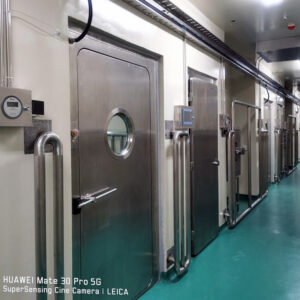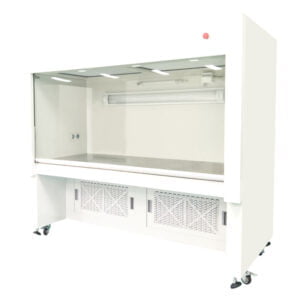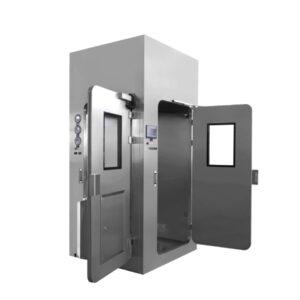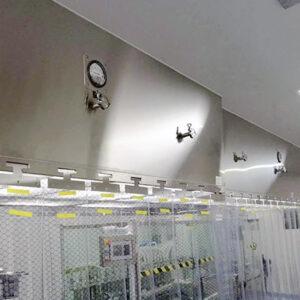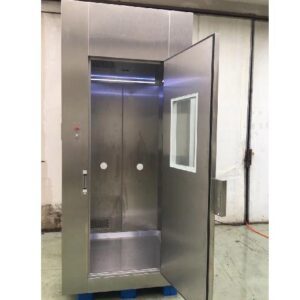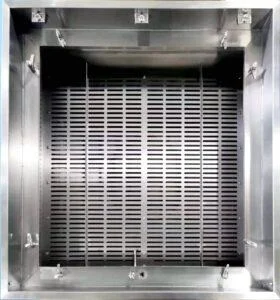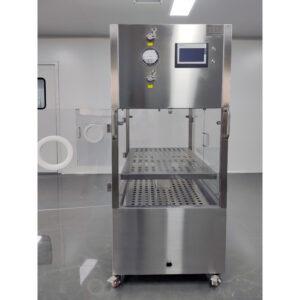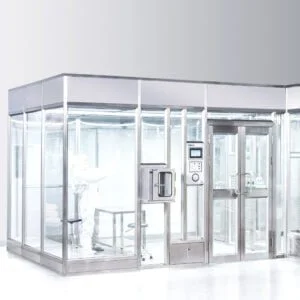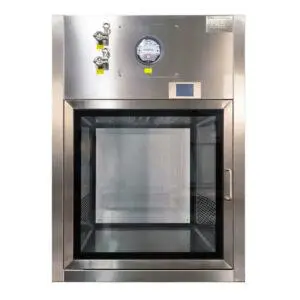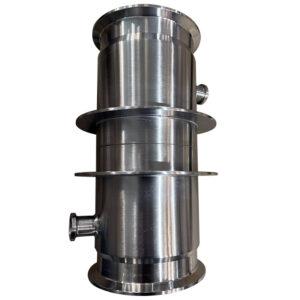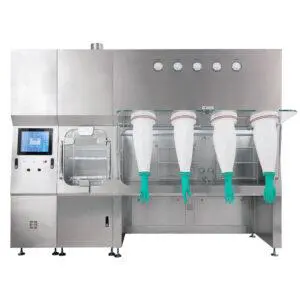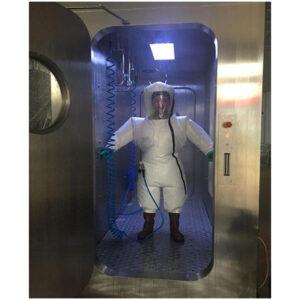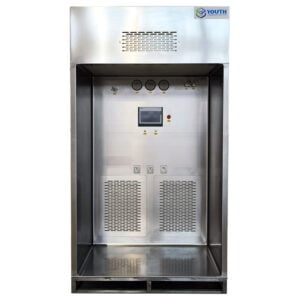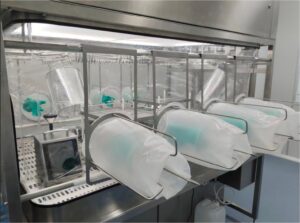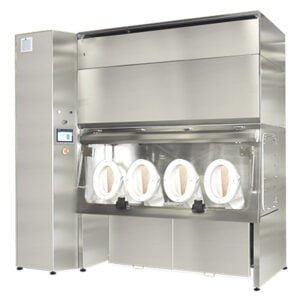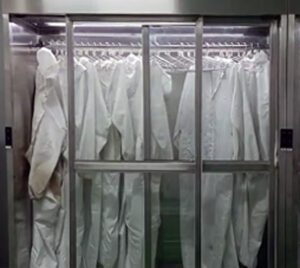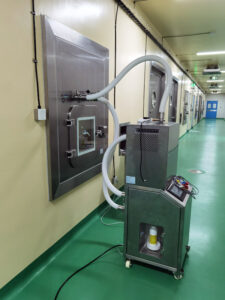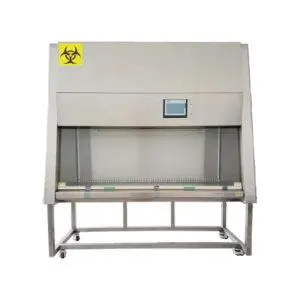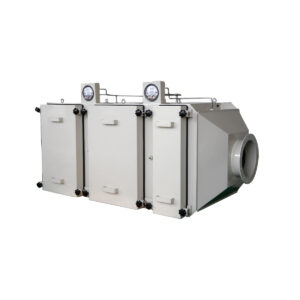In today's rapidly evolving industrial landscape, ensuring workplace safety is paramount. One crucial aspect of maintaining a safe work environment is conducting effective BIBO safety audits and inspections. These audits play a vital role in identifying potential hazards, ensuring compliance with regulatory standards, and ultimately protecting the health and well-being of employees. As industries continue to adopt more sophisticated containment systems, the importance of BIBO (Bag-In-Bag-Out) safety audits has grown exponentially.
BIBO safety audits and inspections are comprehensive evaluations of containment systems designed to handle hazardous materials safely. These audits focus on assessing the integrity of BIBO systems, which are critical in industries such as pharmaceuticals, biotechnology, and nuclear facilities. By conducting regular and thorough BIBO safety audits, organizations can mitigate risks, maintain regulatory compliance, and foster a culture of safety within their operations.
As we delve deeper into the world of BIBO safety audits and inspections, we'll explore the key components, best practices, and challenges associated with these crucial safety measures. From understanding the regulatory landscape to implementing effective audit protocols, this article will provide a comprehensive guide for professionals seeking to enhance their organization's safety practices.
"BIBO safety audits are essential for maintaining the integrity of containment systems and ensuring the safety of workers handling hazardous materials. These audits not only help in identifying potential risks but also play a crucial role in regulatory compliance and continuous improvement of safety protocols."
What are BIBO Systems and Why are They Important?
BIBO systems, short for Bag-In-Bag-Out systems, are specialized containment units designed to handle hazardous materials safely. These systems are crucial in industries where the containment of dangerous substances is paramount, such as pharmaceutical manufacturing, biotechnology research, and nuclear facilities. BIBO systems allow for the safe removal and replacement of contaminated filters without exposing workers or the environment to harmful substances.
The importance of BIBO systems lies in their ability to maintain a controlled environment while allowing necessary maintenance and filter changes. They serve as a critical barrier between hazardous materials and the outside world, protecting both workers and the environment from potential contamination.
BIBO systems consist of several key components, including a housing unit, filters, and a bagging system. The housing unit contains the filters, while the bagging system allows for the safe removal and replacement of filters without breaching containment. This design ensures that hazardous materials remain contained throughout the filter change process.
"BIBO systems are engineered to provide the highest level of safety and containment during filter changes and maintenance procedures. Their design and functionality are critical in preventing the release of hazardous materials and protecting worker health."
| Component | Function |
|---|---|
| Housing Unit | Contains filters and maintains containment |
| Filters | Capture and contain hazardous materials |
| Bagging System | Allows for safe filter removal and replacement |
The effectiveness of BIBO systems in maintaining safety and containment makes them indispensable in high-risk environments. However, to ensure their continued efficacy, regular and thorough safety audits are essential. These audits help identify potential issues before they become critical problems, ensuring the ongoing safety of workers and the environment.
What are the Key Components of a BIBO Safety Audit?
A comprehensive BIBO safety audit encompasses several crucial components, each designed to evaluate different aspects of the system's integrity and performance. Understanding these components is essential for conducting thorough and effective audits that truly enhance workplace safety.
The key components of a BIBO safety audit typically include:
- Visual Inspection: A detailed examination of the BIBO system's physical components.
- Operational Assessment: Evaluation of the system's functionality during normal operations.
- Documentation Review: Examination of maintenance records, operating procedures, and training logs.
- Employee Interviews: Discussions with operators and maintenance personnel to gather insights on system usage and potential issues.
- Performance Testing: Conducting tests to verify the system's containment efficiency and integrity.
Each of these components plays a vital role in ensuring the overall safety and effectiveness of the BIBO system. By systematically addressing each area, auditors can gain a comprehensive understanding of the system's condition and identify any potential areas of concern.
"A well-structured BIBO safety audit should leave no stone unturned. It's not just about ticking boxes; it's about gaining a deep understanding of the system's performance and identifying opportunities for improvement."
| Audit Component | Focus Area |
|---|---|
| Visual Inspection | Physical integrity of housing, seals, and filters |
| Operational Assessment | System functionality during normal use |
| Documentation Review | Compliance with procedures and record-keeping |
| Employee Interviews | User experiences and potential issues |
| Performance Testing | Containment efficiency and system integrity |
The thoroughness of a BIBO safety audit is crucial in maintaining the highest standards of safety. By addressing each component systematically, organizations can ensure that their BIBO systems continue to provide the level of protection necessary for handling hazardous materials safely.
How Often Should BIBO Safety Audits be Conducted?
Determining the frequency of BIBO safety audits is a critical decision that can significantly impact workplace safety and regulatory compliance. While there's no one-size-fits-all answer, several factors influence how often these audits should be performed.
Generally, BIBO safety audits should be conducted at regular intervals, with the frequency depending on factors such as:
- Regulatory requirements
- Industry standards
- The nature of materials handled
- System usage intensity
- Historical performance and incidents
Most experts recommend conducting comprehensive BIBO safety audits at least annually. However, more frequent audits may be necessary for high-risk environments or systems with a history of issues.
"Regular BIBO safety audits are not just a regulatory requirement; they're a proactive measure to ensure ongoing safety. The frequency of these audits should be tailored to the specific needs and risks of each facility."
| Factor | Impact on Audit Frequency |
|---|---|
| Regulatory Requirements | Minimum frequency set by governing bodies |
| Industry Standards | Best practices specific to the industry |
| Materials Handled | Higher risk materials may require more frequent audits |
| System Usage | High-intensity usage may necessitate more frequent checks |
| Historical Performance | Systems with past issues may need closer monitoring |
In addition to scheduled audits, it's crucial to conduct ad-hoc inspections following any incidents, near-misses, or significant changes to the system or processes. This approach ensures that potential issues are identified and addressed promptly, maintaining the highest levels of safety at all times.
Remember, the goal is not just to meet minimum requirements but to foster a culture of continuous improvement in safety practices. Regular YOUTH BIBO safety audits and inspections are an integral part of this commitment to safety excellence.
What Are the Best Practices for Conducting BIBO Safety Audits?
Conducting effective BIBO safety audits requires a structured approach and adherence to best practices. These practices ensure that audits are thorough, objective, and yield actionable insights for improving safety measures.
Some key best practices for conducting BIBO safety audits include:
- Develop a Comprehensive Checklist: Create a detailed audit checklist that covers all aspects of the BIBO system and related safety protocols.
- Use Qualified Auditors: Ensure that audits are conducted by individuals with proper training and expertise in BIBO systems and safety protocols.
- Involve Multiple Stakeholders: Include representatives from various departments such as operations, maintenance, and safety in the audit process.
- Document Everything: Maintain detailed records of all findings, including photographic evidence where applicable.
- Follow Up on Findings: Develop and implement action plans to address any issues identified during the audit.
Implementing these best practices can significantly enhance the effectiveness of BIBO safety audits and contribute to a safer work environment.
"Effective BIBO safety audits are not just about finding faults; they're about fostering a culture of continuous improvement. Each audit should be seen as an opportunity to enhance safety measures and protect our most valuable asset – our people."
| Best Practice | Benefits |
|---|---|
| Comprehensive Checklist | Ensures all aspects are covered systematically |
| Qualified Auditors | Provides expert insights and credible assessments |
| Stakeholder Involvement | Offers diverse perspectives and buy-in |
| Thorough Documentation | Creates a reliable record for future reference |
| Follow-Up Actions | Ensures identified issues are addressed promptly |
By adhering to these best practices, organizations can maximize the value of their BIBO safety audits and inspections. It's not just about compliance; it's about creating a safer, more efficient workplace for everyone involved.
How Can Technology Enhance BIBO Safety Audits?
In the digital age, technology plays an increasingly crucial role in enhancing the effectiveness and efficiency of BIBO safety audits. From data collection to analysis and reporting, technological solutions are revolutionizing how these critical safety checks are conducted.
Some ways technology is enhancing BIBO safety audits include:
- Mobile Audit Apps: Allow auditors to easily input data and capture photos on-site.
- IoT Sensors: Provide real-time monitoring of BIBO system performance.
- Data Analytics: Help identify trends and predict potential issues before they occur.
- Virtual Reality Training: Offers immersive training experiences for auditors and operators.
- Automated Reporting: Generates comprehensive audit reports quickly and accurately.
By leveraging these technological advancements, organizations can conduct more thorough, consistent, and insightful BIBO safety audits.
"Technology is not just a tool; it's a game-changer in BIBO safety audits. By harnessing the power of digital solutions, we can detect issues faster, analyze trends more accurately, and ultimately create safer work environments."
| Technology | Application in BIBO Audits |
|---|---|
| Mobile Apps | On-site data collection and documentation |
| IoT Sensors | Continuous monitoring of system performance |
| Data Analytics | Trend analysis and predictive maintenance |
| Virtual Reality | Enhanced training and simulation |
| Automated Reporting | Efficient and standardized report generation |
Incorporating these technologies into BIBO safety audit processes can lead to more proactive safety management. It allows organizations to move beyond reactive measures and adopt a predictive approach to safety, identifying and addressing potential issues before they become critical problems.
The BIBO safety audits and inspections process can be significantly enhanced through the strategic use of these technological solutions, ensuring that containment systems remain at the forefront of safety and efficiency.
What Are the Common Challenges in BIBO Safety Audits?
While BIBO safety audits are crucial for maintaining a safe work environment, they come with their own set of challenges. Recognizing and addressing these challenges is essential for conducting effective audits that truly enhance safety measures.
Some common challenges in BIBO safety audits include:
- Time Constraints: Balancing thorough inspections with operational demands.
- Technical Complexity: Understanding intricate BIBO system components and their interactions.
- Regulatory Compliance: Keeping up with evolving safety standards and regulations.
- Human Factors: Overcoming complacency and ensuring consistent attention to detail.
- Resource Allocation: Securing necessary resources, including trained personnel and equipment.
Addressing these challenges requires a combination of strategic planning, ongoing training, and a commitment to safety culture.
"The challenges in BIBO safety audits are not roadblocks; they're opportunities for improvement. By acknowledging and addressing these challenges head-on, we can elevate the effectiveness of our safety measures and create more robust protection for our workforce."
| Challenge | Potential Solution |
|---|---|
| Time Constraints | Implement efficient audit protocols and scheduling |
| Technical Complexity | Provide ongoing training and expert consultation |
| Regulatory Compliance | Stay informed through industry associations and regulatory updates |
| Human Factors | Foster a culture of safety and continuous improvement |
| Resource Allocation | Demonstrate the ROI of comprehensive safety measures |
By proactively addressing these challenges, organizations can enhance the effectiveness of their BIBO safety audits and inspections. This not only improves compliance but also contributes to a safer, more efficient work environment for all.
How Can Organizations Improve Their BIBO Safety Audit Processes?
Continuous improvement in BIBO safety audit processes is crucial for maintaining the highest standards of workplace safety. Organizations can take several steps to enhance their audit procedures and ensure they remain effective and relevant.
Key strategies for improving BIBO safety audit processes include:
- Regular Training: Provide ongoing education for auditors and employees on BIBO systems and safety protocols.
- Standardization: Develop and implement standardized audit procedures across the organization.
- Feedback Loops: Establish mechanisms for incorporating insights from previous audits into future processes.
- Technology Integration: Leverage advanced technologies to streamline audit processes and enhance data analysis.
- Cross-Functional Collaboration: Encourage cooperation between different departments to gain diverse perspectives on safety measures.
Implementing these strategies can lead to more comprehensive and effective BIBO safety audits, ultimately enhancing overall workplace safety.
"Improving BIBO safety audit processes is not a one-time effort; it's an ongoing commitment to excellence in safety. By continuously refining our approaches, we can stay ahead of potential risks and create a safer environment for everyone."
| Improvement Strategy | Expected Outcome |
|---|---|
| Regular Training | Enhanced auditor competence and employee awareness |
| Standardization | Consistent and comparable audit results across sites |
| Feedback Loops | Continuous refinement of audit processes |
| Technology Integration | Improved efficiency and data-driven insights |
| Cross-Functional Collaboration | Holistic approach to safety management |
By focusing on these improvement strategies, organizations can elevate their BIBO safety audit processes from mere compliance exercises to powerful tools for enhancing workplace safety and operational efficiency.
What Role Do Employees Play in BIBO Safety Audits?
Employees play a crucial role in the success of BIBO safety audits. Their involvement goes beyond being the subjects of the audit; they are active participants in maintaining safety standards and contributing valuable insights to the audit process.
Key roles employees play in BIBO safety audits include:
- Daily Monitoring: Observing and reporting any anomalies in BIBO system performance.
- Providing Feedback: Sharing experiences and suggestions for improvement.
- Adhering to Protocols: Consistently following safety procedures and best practices.
- Participating in Training: Engaging in regular safety training and updates.
- Supporting Auditors: Cooperating fully during audit processes and providing necessary information.
Engaging employees in the audit process not only improves the quality of audits but also fosters a culture of safety throughout the organization.
"Employees are the eyes and ears of any safety program. Their active participation in BIBO safety audits is not just beneficial; it's essential for creating a truly comprehensive and effective safety culture."
| Employee Role | Impact on Audit Process |
|---|---|
| Daily Monitoring | Early detection of potential issues |
| Providing Feedback | Practical insights for improvement |
| Protocol Adherence | Demonstration of safety culture in action |
| Training Participation | Enhanced awareness and competence |
| Auditor Support | More thorough and accurate audit outcomes |
By recognizing and valuing the role of employees in BIBO safety audits, organizations can create a more inclusive and effective safety program. This approach not only improves the quality of audits but also reinforces the importance of safety in everyday operations.
As we conclude our exploration of conducting effective BIBO safety audits, it's clear that these processes are integral to maintaining a safe and compliant workplace. From understanding the key components of BIBO systems to leveraging technology and engaging employees, every aspect plays a crucial role in enhancing safety measures.
BIBO safety audits are not just regulatory requirements; they are opportunities to continuously improve safety protocols, protect employees, and ensure the integrity of containment systems. By following best practices, addressing common challenges, and fostering a culture of safety, organizations can transform their BIBO safety audits from routine checks into powerful tools for risk mitigation and operational excellence.
Remember, the goal of these audits goes beyond compliance. It's about creating a safer work environment, protecting valuable assets, and demonstrating a commitment to the well-being of employees and the community. As industries continue to evolve and face new challenges, the importance of thorough and effective BIBO safety audits will only grow.
By staying informed, embracing technological advancements, and maintaining a proactive approach to safety, organizations can ensure that their BIBO systems continue to provide the highest level of protection. In the end, effective BIBO safety audits and inspections are not just about checking boxes; they're about safeguarding lives, protecting the environment, and building a culture of safety that permeates every aspect of operations.
External Resources
- Safeguarding Health: The Role of BIBO Systems in Workplace Safety – This article explains how BIBO systems enhance workplace safety, particularly during filter maintenance procedures, and how these systems contribute to regulatory compliance with agencies like OSHA, FDA, and EPA.
- Cal-OSHA Audits & Inspections – Although not specifically about BIBO systems, this resource provides general information on OSHA audits and inspections, which is relevant to understanding the broader context of safety audits and inspections in workplaces.
- Safety Audit and Inspection Services – KPA – KPA offers consulting services that include safety audits and inspections, which can be relevant for organizations using BIBO systems to ensure compliance with OSHA, EPA, and other regulatory standards.
- OSHA Inspections (Fact Sheet) – This fact sheet from the County of Sonoma provides detailed information on OSHA inspections, which is crucial for understanding the regulatory framework that BIBO systems help comply with.
- Regulatory Compliance and Safety Audit Services – KPA's services include on-site and virtual audits to ensure compliance with various regulatory bodies, which can be applied to the use and maintenance of BIBO systems.
- Workplace Safety and Health Unit – Safety Planning – This resource from the County of Sonoma discusses safety planning, including audits and inspections, which is relevant to the overall safety protocols that BIBO systems are part of.
Related Contents:
- BIBO Safety Certifications: What You Need to Know
- BIBO System Regulations: Compliance Guide 2025
- Effective BIBO Safety Training Programs
- BIBO Systems: Ensuring Food Safety in Processing
- Safe Chemical Handling with BIBO Systems
- BIBO Solutions for Hazardous Waste Management
- BIBO vs. Traditional Containment: Which is Better?
- Top 5 BIBO Containment Solutions for 2025
- BIBO Automation: Enhancing Safety and Efficiency
